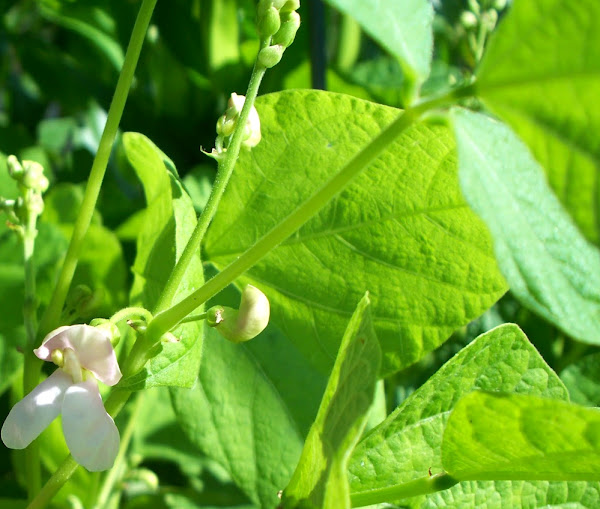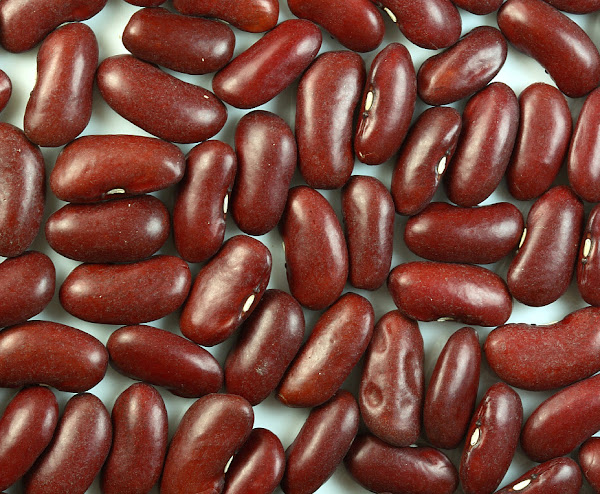Growing kidney bean is also a popular crop in India. Himachal Pradesh, Jammu and Kashmir, Kerala, Karnataka, Maharashtra, West Bengal, Uttarakhand, Uttar Pradesh and Tamil Nadu are the major states for growing kidney bean in India.
The kidney bean (Phaseolus vulgaris) is a variety of common bean. It is named for it’s visual resemblance in shape and color to a kidney.
But the kidney beans should not be confused with other red beans (such as adzuki beans).
The kidney beans are very nutritious and they are very good for human health. They are great source of protein and also an excellent source of molybdenum.
The kidney beans also contain good source of cholesterol-lowering fiber. ‘Rajma’ is a popular dish from the North Indian cuisine made from the kidney beans.
Origins
The kidney beans are thought to have originated in Peru. They are part of common beans which were cultivated as early as 8,000 years ago.
Currently, the kidney beans are very popular in India, and they are cultivated in almost all states in India.
But the kidney beans are also becoming very popular all over the world gradually, mainly because of it’s numerous health benefits.
Other Names
The kidney bean is also known by many other names. It is known as common bean, haricot bean, navy bean or snap bean in English, Rajma in Hindi, Telugu and Marathi, Rajmah in Assamese and Punjabi, Raajma in Bengali, Gujarati and Kannada, Van Payar in Malayalam, Rajama in Oriya, Mae Eta in Sinhala.
How to Start Growing Kidney Bean
Growing kidney bean is becoming very popular throughout the world, especially it is very popular in India.
Growing kidney bean either commercially or in small scale both are very easy. But growing kidney bean commercially can be a good way for generating some extra income.
However, here we are describing more information about growing kidney bean from planting, caring to harvesting.
Select a Good Location
Select a location with full sun and very good drainage system for growing kidney bean.
The kidney beans are sensitive to saline soils, and they grow best within the soil pH range between 5.5 and 6.
Consider all these factors while choosing a location for growing kidney bean.
Prepare the Soil
The kidney bean plants can be grown on wide variety of soils from light sandy to heavy clay soils.
But the kidney bean plants generally grow well in loamy soil which is well drained and slightly rich in organic contents.

1-2 ploughing with one deep ploughing and 2-3 cross harrowing will be enough for preparing the soil for growing kidney bean.
Control weeds from the field while preparing the soil. Add both organic and chemical fertilizers while ploughing and harrowing.
For commercial kidney bean production, you have to add both Nitrogen and Phosphorus into the soil.
The kidney bean lack biological Nitrogen fixation due to poor nodulation.
So, you have to apply chemical fertilizers for having good yield. Add 80-100 kg Nitrogen and 50-60 kg Phosphorus into the soil while preparing.
Level the soil after ploughing, harrowing and adding all the fertilizers into the field.
Climate Requirements for Growing Kidney Bean
The kidney bean plants are very much responsive to specific temperature conditions, and the plants grow well in tropical and temperate areas.
Areas receiving 600-1500 mm rainfall annually is ideal for growing kidney bean plants.
Ideal temperature for growing kidney bean plants and producing maximum yield is between 15 °C and 25 °C.
Best Time for Growing Kidney Bean
The kidney bean seeds can be sown twice a year. The seeds can be planted either in January-February or in June-July.
Choose a Variety
There are many different varieties available of the kidney beans. But all these varieties are not suitable for all locations. So, you have to choose that variety which grows well in your area.
You can consult with an existing farmer or any agriculture specialist in your area for having good recommendation.
Some popular kidney bean varieties are Cabernet Dark Red, California Early Light Red, Montcalm Dark Red, Red Hawk, Red Rover and Sacramento Light Red. You can choose any variety depending on it’s availability in your area.
Purchase Seeds
Purchase seeds after selecting a good variety for your production purpose. Nowadays, the kidney beans are common throughout the world and the seeds should be easily available in your area. You can also consider ordering the seeds online.
Seeds per Acre
Actual amount can vary depending on the chosen variety and also production type. On average, you will require about 30-35 kg seeds per acre for early sown varieties, and 10-12 kg per acre for the pole type varieties.
Planting
You can use the dibbling method for sowing the kidney bean seeds. The seeds are sown on ridge in hilly areas.
But the seeds are sown in line or on bed for growing kidney bean in plain areas. Space the rows to about 1.5-2 feet apart for the early shown varieties, and space the seeds to about 4-6 inches distance in rows.
Sow the seeds at about 6-7 cm depth and try to water the field lightly after sowing the seeds.
You should treat the seeds before sowing. Use Thiram at the rate of 4 grams per kg of seeds for treating the seeds.
Caring
The kidney bean plants generally require less care and maintenance as compared to many other commercial crops.
Although taking additional care will help the plants to grow better and which will ultimately increase the total yield.
Here we are describing more about the additional caring process for growing kidney bean plants.
Fertilizing: The kidney bean plants will not require applying additional fertilizers. The plants will grow just fine if you have prepared the soil in the above mentioned methods.
Watering: Adequate and timely watering is very important for growing kidney bean plants. Several irrigation are required during the growing season. First watering on 25th day after sowing the seeds, and then 3 irrigation at 25 days interval are necessary for getting maximum yield. Watering prior to blooming, during flowering and at the pod development stage is very important.
Controlling Weeds: Weeds consume most of the nutrients form the soil, so controlling weeds is very important for good yield from kidney bean cultivation. Controlling weeds while preparing the soil is always a good idea. Control additional weeds by hoeing if required.
Pests and Diseases
Like many other commercial crops, the kidney bean plants are also susceptible to some common pests and diseases.
Aphid, thrips and mites are some of the common pests for the kidney bean plants. And wilt, yellow mosaic and powdery mildew are some common diseases for the kidney bean plants.
Please consult with an agriculture specialist in your area for having good suggestion for getting rid of all these pests and diseases.
Harvesting
Depending on the variety, the kidney bean crop will be ready for harvesting within 120-130 days. You can expect to harvest when the pods are fully grown and ripe and their color turn to yellow.
Majority of the leaves turn yellow or drop when the crop becomes ready for harvesting. Timely harvesting kidney beans is important, because delaying can cause shattering.

Keep the harvested plants in sun for 3-4 days. And after proper drying, thresh with either sticks or bullocks. Then clean the seeds, and use seed bins for storing the clean seeds.
Yield
Total wield depends on many factors such as type of soil, variety of seed and farm management practices. But on an average, you can expect 1000 to 1200 kg kidney bean seeds per hectare.
Health Benefits of Consuming Kidney Bean
The kidney bean is very nutritious and healthy. Some notable health benefits of consuming kidney beans are listed below.
- The kidney beans may help in improving brain function and also in preventing cancer.
- Consuming it on a regular basis may help to control blood sugar levels and may prevent diabetes.
- The kidney bean seeds are a very good source of protein and are rich in fiber.
- Consuming the seeds may help in preventing bad cholesterol and it may help in bone strength/prevent osteoporosis.
- Regular consumption may help to keep your heart healthy, and it also help in maintaining healthy skin.
- Regular consumption of kidney beans also help in weight loss, due to it’s high fiber content.
Growing kidney bean is becoming popular day by day throughout the world, and it’s a very important crop around the world. The beans are very tasty and nutritious. Actually the delicious taste and flavor of the kidney bean seeds is something which is irresistible to the food lovers. Growing kidney bean commercially can be profitable if you follow everything mentioned above perfectly. Good luck!






Nice for the beginner agriculteralist.
Thanks for your honest opinion! Good luck!